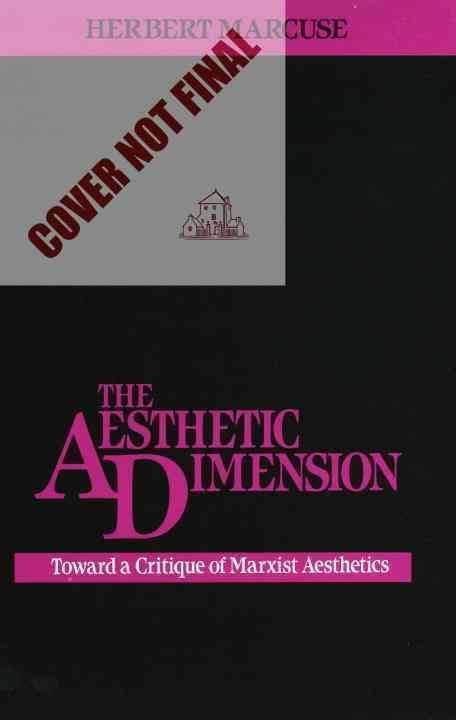Country Germany Media type Print ISBN 0-333-26674-9 | Pages 88 Originally published 1977 Page count 88 Subject Aesthetics | |
 | ||
Original title Die Permanenz der Kunst: Wider eine bestimmte marxistische Ästhetik Similar Herbert Marcuse books, Marxism books | ||
The Aesthetic Dimension: Toward a Critique of Marxist Aesthetics (German: Die Permanenz der Kunst: Wider eine bestimmte marxistische Ästhetik) is a 1977 book on aesthetics by philosopher Herbert Marcuse, in which Marcuse provides an account of modern art's political implications and relationship with society at large.
It is the final major work by Marcuse, a founding member of the Frankfurt School. The book is also noteworthy as a demarcation of Marcuse's split with Marxism via his rejection of Marxist aesthetics.
Summary
The Aesthetic Dimension (not to be confused with a chapter from Marcuse's Eros and Civilization of the same name) is a response to previous writings within critical theory on the subject of art, notably those of Walter Benjamin and Theodor Adorno. Marcuse rejected Benjamin's call in "The Work of Art in the Age of Mechanical Reproduction" for the politicization (i.e., a literal reflection of perceived political realities) of modern, reproducible art both to reflect the state of a society and to incite change. Like both Benjamin and Adorno, Marcuse believed that art promises resistance to societal repression, and that a cultural revolution is necessarily connected to a political or social revolution. Adorno (as represented mainly by his posthumous Aesthetic Theory) and Marcuse agreed that this possibility must be realized through artistic detachment and symbolism. Marcuse however offered a more inclusive and less radical suggestion for modern art's source of power than did Adorno, who believed that the works of high culture were the sole artistic source of potential emancipation.
Marcuse instead pointed to what he perceived to be the successes of high culture and translated these to all areas of art. For Marcuse, art's promise of transcendence could only be fulfilled via a conceptual independence from society, but this independence is accessible through a host of media. The successful artist will attain truth in his work through detachment that results in symbolic representation. This successful art must necessarily invoke a longing for something utopian and the promise of ultimate happiness represented by beauty. This symbolic longing for fulfillment will awaken us from complacency.
Marcuse stated in the book's introduction that he considered literature the primary source of his influence for this system, but feels that the ideas would apply to music and plastic arts as well.
